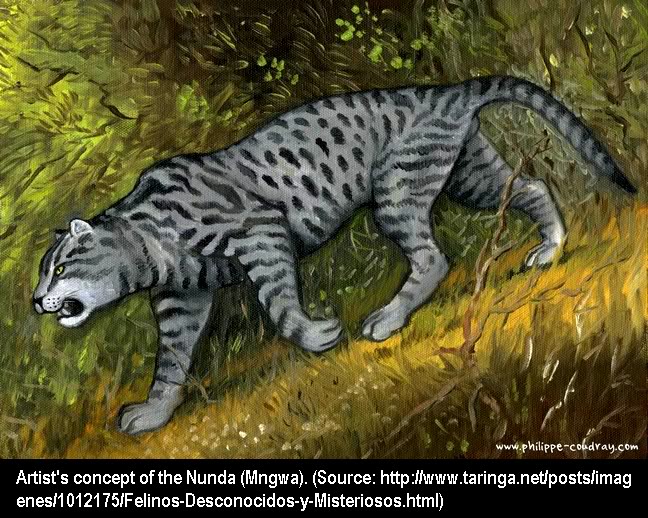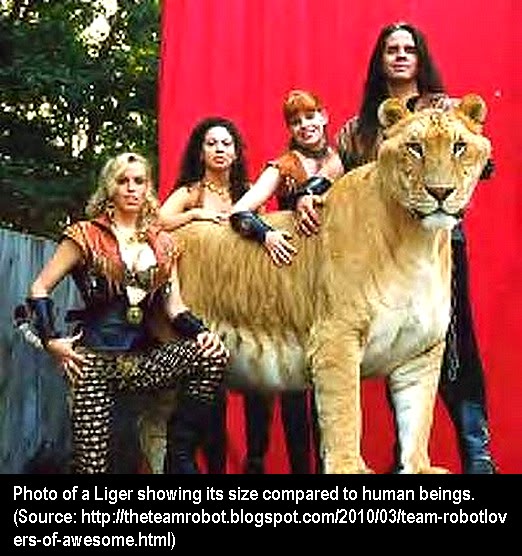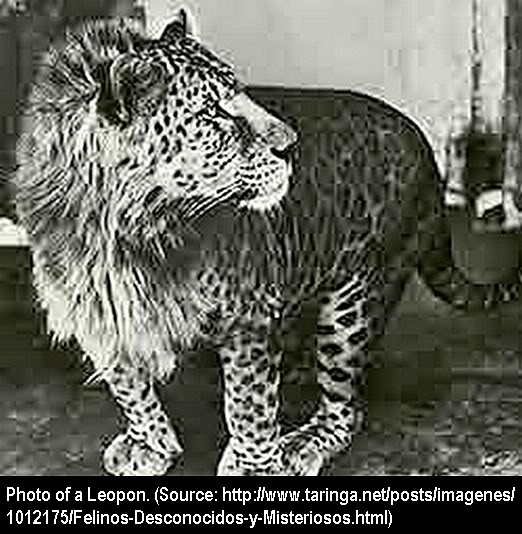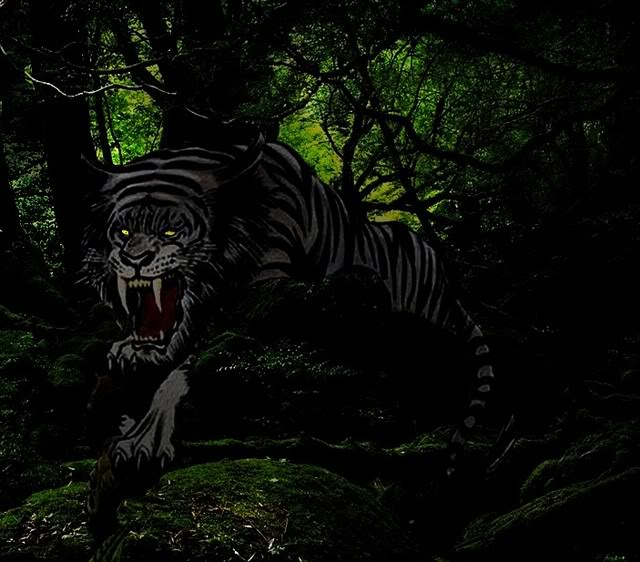
|
|||
Mngwa - The big grey silent killer ghost - Unexplained Mysteries
See more at: http://en.wikipedia.org/wiki/Mngwa
The Mngwa (MING-wah) or Nunda in the Swahili language meaning "the strange one" was first mentioned in a Swahili song from the year 1150 which also mentions the Lion (Simba) the Leopard (Nsui) and the Mngwa as three different creatures proof that there is no confusion in the minds of the natives when it comes to the three creatures. Legend has it that this mythical cat is stronger than a lion and deadlier than a leopard. It moves silently, comes out to kill humans, and then disappears. No hunter has ever succeeded in killing one. The Mngwa's fur is dark gray with black stripes, like that of a tabby cat. The beast's body may have a few hairless spots due to the fact that many of its victim's were said to be found clutching tufts of gray fur in their dead hands. The bodies of this monster's victim's show wounds made by razor sharp claws and huge teeth. If real, the Mngwa would be so ferocious that it could kill a person with a single bite or swipe of its paws. The beast has been described in detail by many natives, and is said to be distinctly different from lions and leopards. In the 1920s, British colonial official Captain William Hichens saw and wrote about the mangled bodies of several natives that were said to have been attacked by the legendary monster; the victims clutched tufts of gray fur in their hands. Native hunters who regularly chased lions were too frightened to pursue the Mngwa. Under the cover of night, the Mngwa is said to stalk its human prey without a sound. its padded paws wouldn't make any noise when the cat is hunting. As far back as 700 years ago, leaders of native tribes organized hunting parties to find the Mngwa, but came up empty. Expert trackers in more modern times have tried to track the beast with the same results. The Snow leopard mystery of the Mngwa has terrified Africans for nearly a thousand years. when Captain Hichens brought stories of this beast to England in the early 1900s, scientists argued over what type of creature the Mngwa might have been. Many thought it was an unknown species of big cat, perhaps related to leopards. others believed the Mngwa was a known species with unusual colors and markings, much like the snow leopard (left). Others passed the idea off as legend. On another occasion, at Lindi, another Tanganyika town, a mngwa took to prowling the village at night, killed several villagers and, finally, a policeman on point at the market. For nights the whole town lived in fear, and although we doubled the police-guards we had difficulty in getting the men to go on duty. But I have seen those same men rout a lion out of a bush-patch with sticks! They swore that this beast was not a lion, nor a leopard, but a mngwa. We made every effort to waylay it, but, unfortunately, were not successful; nor did we get a lion, as we might reasonably have done had it been one.
In 1937, Hichens wrote that the attacks had begun again: Not long ago a man was brought in to me at Mchinga on a litter and terribly mauled by some great beast. He said it was a mngwa ... One well-known hunting-song tells of the Simba [lion], Nsui [leopard], and the Mngwa all in one verse, plainly showing that there is no confusion in the native mind between these three great carnivores. In 1938, an influential discussion on the Mngwa appeared in the world famous British scientific journal Discovery. The story then appeared in Frank W. Lane's 1954 issue of Nature Parade, about Patrick Bowen, a hunter who said he had tracked the Mngwa.  Patrick Bowen said a Mngwa had carried off a young boy, and that he and another man followed the tracks of the animal. "The spoor we were following appeared to be that of a leopard as large as the largest lion.". Bowen also noted that it was possible that some of the attacks attributed to the chemosit or Nandi Bear were the work of the Mngwa. Bernard Heuvelmans, in his book “ On the Track of Unknown Animals”, suggests the theory that the mngwa may be an abnormally-coloured specimen of some known species. He later ,in a 1986 Cryptozoology article, proposed that it may be a larger subspecies of the golden cat (Profelis aurata). Going to relieve the midnight watch, an oncoming native constable one night found his comrade missing. After a search he discovered him, terribly mutilated, underneath a stall. The man ran to his European officer, who went with me at once to the market. We found it obvious that the askari had been attacked and killed by some animal--a lion, it seemed. In the victim's hand was clenched a matted mass of greyish hair, such as would come out of a lion's mane were it grasped and torn in a violent fight. But in many years no lion had been known to come into the town.  We were puzzling the problem at the boma next morning when the old Arab Liwali or native governor of the district hurried into our office, with two scared-looking men at his heels. Out late the previous night, they said, they had slunk by the market-place lest the askari should see them and think them evil-doers; and as they crept by they were horrified to see a huge brindled cat, the great mysterious nunda which is feared in every village on the coast, leap from the shadows and bear the policeman to the ground. The Liwali, a venerable and educated man, assured us that within his memory the nunda had visited the village several times. It was an animal, not a lion or a leopard, but a huge cat as large as a donkey and marked like a tabby. I had heard this tale, and put it down as silly superstition, but the Liwali's assertion put a different light on things... ...That same night another constable was torn to pieces, and clutched in his hands and scattered about the buckles of his uniform was more of that grey, matted fur... Mr. Hichens has thus made what may be the earliest mention in the European press of an animal the Tanzanian natives have known of for hundreds of years: the dreaded Nunda or Mngwa ("strange one"). The animal is reputed to be a gigantic cat, and is supposedly quite fierce. Hichens, who seems to be the primary source of material on the creature, quotes an old Swahili war-song. The song was written in approximately 1150. I dwell not in the city to become a worthless idler, I plunge me in the forest to be eaten by the Mngwa! In Swahili Tales, Edward Steere recounts the tale of Sultan Majnún. The legend recounts how the sultan's cat escapes and begins to kill chickens. The sultan lets the cat go about its business and it soon moves up to killing goats and sheep. Finally the sultan declared that it was no longer a cat--"its name is Nunda". The sultan's son vows to slay the cat. He kills a dog, a civet, a zebra, a giraffe, a rhinoceros, and an elephant before finally tracking down the cat. "This must be the Nunda," he said. "My mother has told me that its ears are small and these are small; she has told me that the Nunda is broad and not long, and this is broad and not long; she has told me that it has two blotches like a civet, and this has two blotches like a civet; she has told me that its tail is thick and this tail is thick; and all the peculiarities she told me of are here."  Of course this creature is the Nunda, and he kills the animal. The story ends with the son inheriting the kingdom, marrying, and ruling for many years. But back to Hichens' report: he sent the "grey, matted fur" to headquarters to be identified. It was said to be "a fur and not a hair as you state: probably cat." In 1937, Hichens wrote again of the attacks, as they had begun again. Not long ago a man was brought in to me at Mchinga on a litter and terribly mauled by some great beast. He said it was a mngwa ... One well-known hunting-song tells of the Simba [lion], Nsui [leopard], and the Mngwa all in one verse, plainly showing that there is no confusion in the native mind between these three great carnivores. Hunter Patrick Bowen told author Frank Lane that he had once tracked a Mngwa. It had carried off a young boy, and Bowen and another man followed the tracks of the animal. "The spoor we were following appeared to be that of a leopard as large as the largest lion." Bowen recorded that its hairs were brindled and noticeably different from those of a leopard. Bowen also noted that it was possible that some of the depredations atributed to the chemosit or Nandi Bear were the work of the Mngwa. Bernard Heuvelmans, in his discussion of the animal in On the Track of Unknown Animals, advances the theory that the mngwa may be an abnormally-colored specimen of some known species. And in a 1986 Cryptozoology article, he proposes that it may be a larger subspecies of the golden cat (Profelis aurata). comments powered by Disqus Submit News/Videos/Links | Discuss article | Article Link | More Unsolved and Unexplained Mysteries |
More can be addded on request. Direct your requests at vinit@theunexplainedmysteries.com
